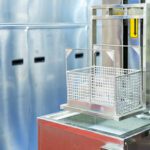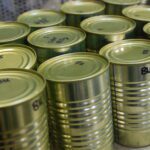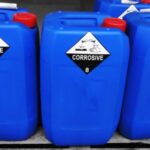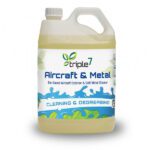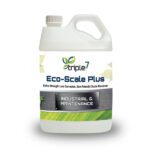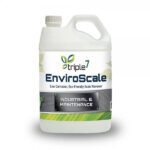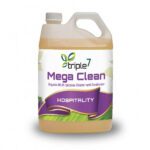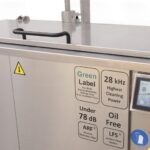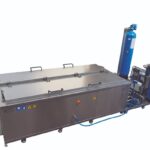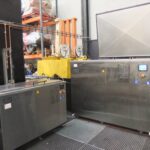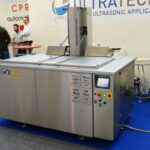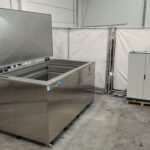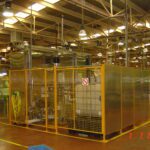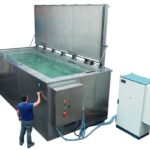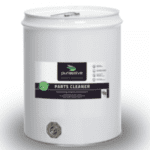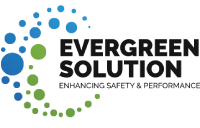Table of Contents
Introduction: Addressing the Cost Concerns in Heat Exchanger Cleaning
When it comes to cleaning heat exchangers, particularly in industrial environments, two major concerns often arise: cost and safety. Many companies fear that introducing new technologies, such as automated cleaning systems or advanced safety processes, will result in increased capital (CAPEX) and operational expenditures (OPEX). However, recent market studies indicate a promising shift toward cost-effective solutions, especially with innovations designed to increase safety and efficiency.
This blog delves into how incorporating new safety features and innovations is helping industries strike a balance between efficient cleaning processes, like heat exchanger descaling and copper tube cleaning chemicals, and the need to manage costs effectively.
The Fear of Increased Expenses: CAPEX and OPEX in Focus
One of the main challenges industries face when upgrading their cleaning systems is the fear of higher CAPEX and OPEX. Initial capital investments in advanced cleaning technologies such as automated cleaning systems may seem daunting, especially when budgets are already tight.
However, market studies show that while the upfront cost may be higher for automated systems, the long-term savings on operational costs are significant. Automated cleaning reduces labor hours, minimizes the need for toxic chemicals, and enhances safety—leading to reduced OPEX over time.
More importantly, these advanced systems are increasingly being integrated with safety features, which mitigate risks to both equipment and personnel, preventing costly downtimes due to accidents or inefficiencies.
Market Studies: Trends in Automated Cleaning Systems for Heat Exchangers
Recent market studies suggest that the demand for automated cleaning systems is growing, particularly in industries relying heavily on heat exchangers, such as oil and gas, chemical processing, and power generation. This surge is largely driven by two factors: the increasing need for improved safety measures and the desire for more sustainable, cost-efficient operations.
The studies also highlight a rise in the use of specialized chemicals, like heat exchanger descalers and copper tube cleaning chemicals, that complement automated cleaning processes. These chemicals ensure more effective cleaning without causing harm to the delicate components of the heat exchanger, such as copper tubes, further enhancing the cost-benefit equation.
How Automation Reduces Costs
Automated cleaning is no longer viewed solely as a luxury for large-scale industries. Market data shows that even small and mid-sized operations are beginning to realize its cost-saving potential, particularly in the following areas:
- Reduced Labor Costs: Automated cleaning systems significantly reduce the need for manual labor. These systems can be operated remotely, minimizing human intervention and thus labor costs.
- Enhanced Efficiency: Automated systems are faster and more thorough than manual cleaning processes. With specialized cleaning agents, such as copper tube cleaning chemicals, heat exchangers can be descaled and maintained more efficiently, leading to higher operational uptime.
- Minimized Equipment Downtime: The precision of automated systems ensures that equipment is cleaned without causing damage, thus avoiding unexpected downtimes and the associated costs.
- Long-Term Savings on Consumables: The precise nature of automated cleaning systems ensures optimal use of cleaning chemicals like heat exchanger descalers, reducing wastage and cost over time.
The Role of Heat Exchanger Descalers and Specialized Cleaning Chemicals
The choice of cleaning chemicals plays a critical role in ensuring the longevity of heat exchangers, especially those with delicate copper tubes. Market research shows an increasing preference for environmentally friendly, non-toxic descalers that are both effective and safe for equipment and workers.
Benefits of Using Heat Exchanger Descalers
Non-Corrosive: Modern heat exchanger descalers are formulated to be non-corrosive to metals, ensuring that they effectively remove scale and deposits without damaging the underlying material. This is particularly important for copper tubes, which are often more susceptible to chemical damage.
Time-Efficient: These chemicals work quickly, minimizing the time that equipment needs to be offline for cleaning. This contributes directly to lower OPEX, as equipment downtime is reduced.
Safety First: Heat exchanger descalers are increasingly formulated with safety in mind, minimizing risks to personnel during the cleaning process. Fewer hazards mean lower insurance costs, less need for safety interventions, and more peace of mind for management.
Copper Tube Cleaning Chemicals: Preserving Equipment Lifespan
Copper tubes in heat exchangers are notorious for being delicate yet critical components of the system. Their effective cleaning is essential for maintaining the overall efficiency of the heat exchanger, and this is where copper tube cleaning chemicals come in.
Market studies emphasize the growing trend toward non-toxic, eco-friendly copper tube cleaning chemicals that offer powerful cleaning capabilities without posing a threat to the copper itself. These chemicals not only prevent the build-up of scale but also maintain the integrity of the copper tubes, thus extending the lifespan of the heat exchanger and reducing the need for costly replacements.
New Safety Features: Ensuring Peace of Mind While Lowering Costs
Incorporating new safety features into heat exchanger cleaning processes is another key factor in reducing the fear of high expenses. These features address not only worker safety but also the integrity of the equipment, ensuring that cleaning is conducted without causing damage or operational interruptions.
Sensor Integration for Monitoring
Many of the latest automated cleaning systems come equipped with sensor technology that monitors key parameters such as pressure, temperature, and chemical levels. These sensors ensure that cleaning is done optimally, with no risk of over-pressurization or chemical overuse, which could otherwise lead to costly repairs.
Remote Operation and Diagnostics
Remote operation allows technicians to monitor and control the cleaning process from a safe distance, further enhancing safety. Additionally, many systems offer diagnostic features that provide real-time feedback on equipment conditions. This allows for preventive maintenance, which in turn reduces the likelihood of unexpected downtimes and associated expenses.
Overcoming the Fear of High Costs Through Innovation
It’s clear that market innovations and new safety features in heat exchanger cleaning are making these processes both safer and more cost-effective. The initial fear of high CAPEX and OPEX is being offset by the long-term savings and safety benefits that come with advanced systems and cleaning chemicals.
For industries facing the challenge of cleaning delicate components like copper tubes, specialized chemicals combined with automated systems provide a solution that is not only efficient but also cost-effective in the long run. Moreover, the integration of new safety features reduces risks and ensures that cleaning can be performed without fear of equipment damage or operational delays.
Conclusion: Safety and Cost-Efficiency Go Hand-in-Hand
At the intersection of safety, efficiency, and cost lies the future of heat exchanger cleaning. By relying on market-driven innovations like automated cleaning systems, heat exchanger descalers, and copper tube cleaning chemicals, industries can overcome the fear of escalating expenses. These technologies not only reduce labor and downtime but also enhance safety and equipment longevity, ensuring that CAPEX and OPEX are kept in check.
Ultimately, investing in advanced cleaning solutions is not just a matter of safety or compliance—it’s a smart business decision that paves the way for long-term savings and operational efficiency.


